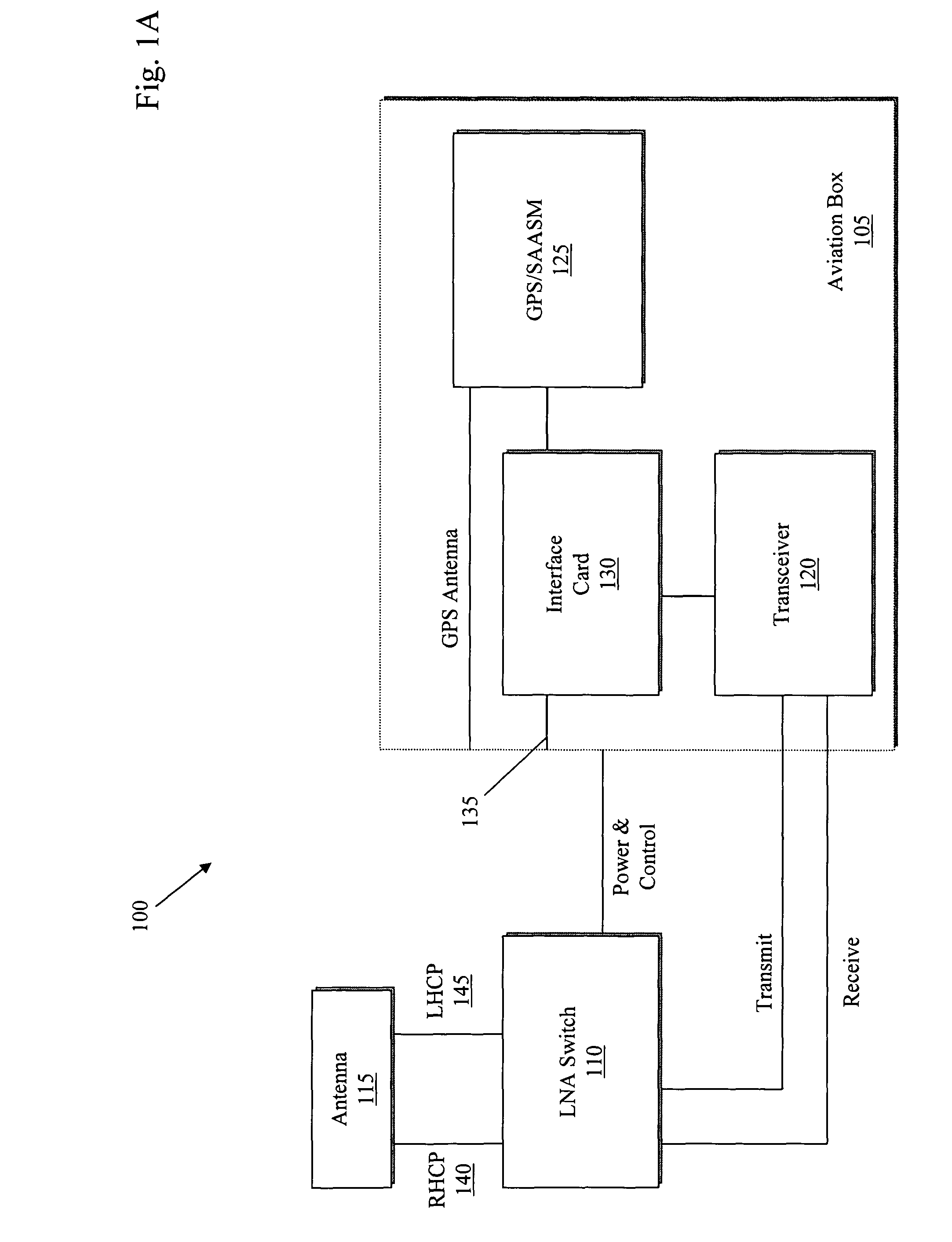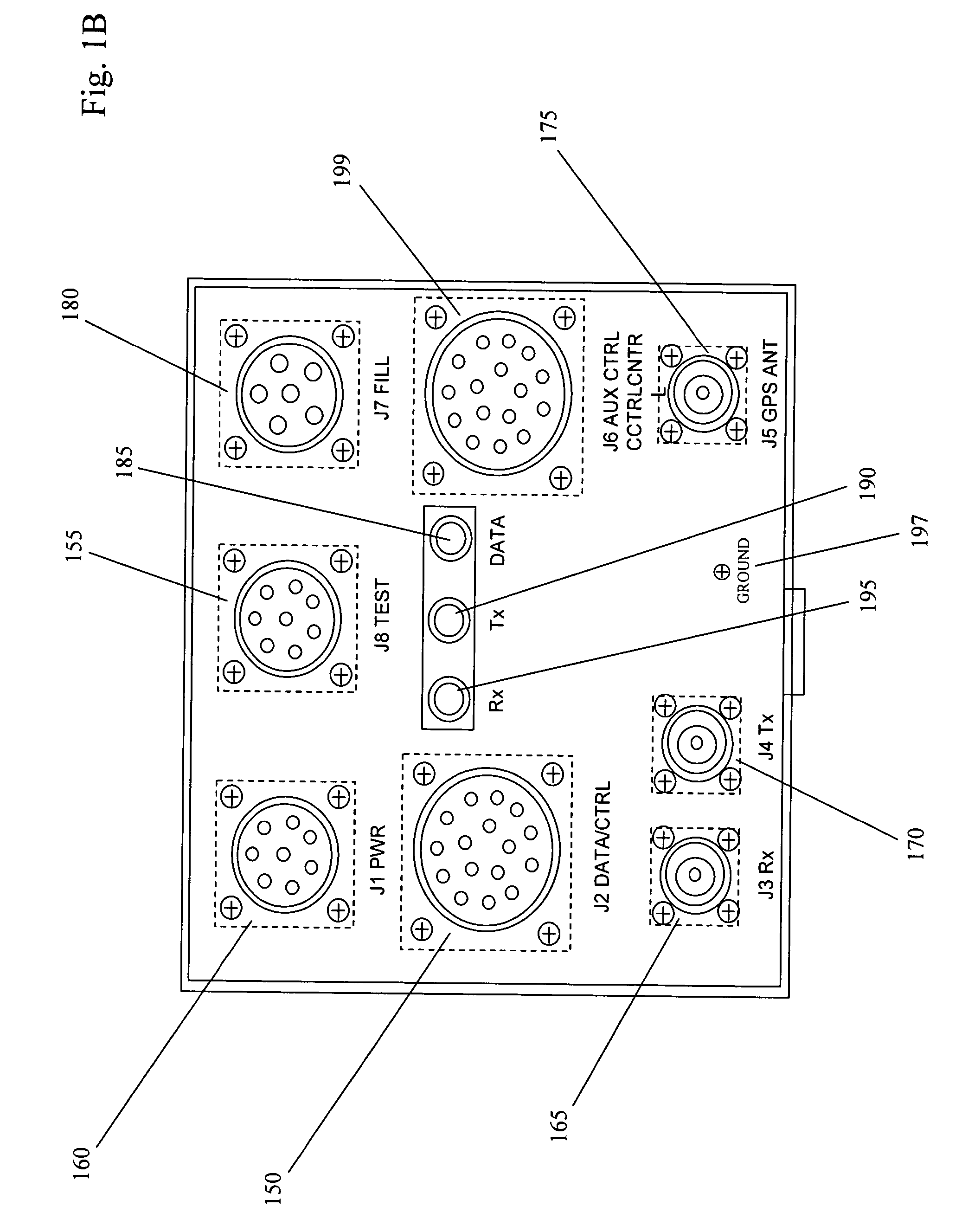In-flight transceiver and locator system
a locator system and transceiver technology, applied in the field of transceiver systems, can solve the problems of not providing real-time data updates, system size is not typically small enough to fit inside the cockpit of the aircraft, and current attempts at in-flight locator systems are bulky, etc., to achieve the effect of quick sending and receiving messages
- Summary
- Abstract
- Description
- Claims
- Application Information
AI Technical Summary
Benefits of technology
Problems solved by technology
Method used
Image
Examples
Embodiment Construction
[0022]The system provides satellite communications such as two-way messaging and position reporting for fixed and rotary wing aircrafts, where traditional methods of communications are not otherwise practical. The system keeps remote users connected to other remote users and to control stations and provides location visibility. This functionality solves two specific problems for military applications: it reduces the number of casualties by having a means of receiving / sending critical information quickly and securely, and maintains better control and visibility of geographically dispersed vehicles, soldiers, and other assets.
[0023]The in-flight transceiver system is developed specifically to meet BlueForce Tracking Aviation's requirements. Specifically, the system operates under temperature extremes and Electromagnetic Interference protection is provided. As such, the system meets the Aviation Applied Technology Directorate's (AATD) test for airworthiness, MIL-STD-810—environmental e...
PUM
 Login to View More
Login to View More Abstract
Description
Claims
Application Information
 Login to View More
Login to View More - R&D
- Intellectual Property
- Life Sciences
- Materials
- Tech Scout
- Unparalleled Data Quality
- Higher Quality Content
- 60% Fewer Hallucinations
Browse by: Latest US Patents, China's latest patents, Technical Efficacy Thesaurus, Application Domain, Technology Topic, Popular Technical Reports.
© 2025 PatSnap. All rights reserved.Legal|Privacy policy|Modern Slavery Act Transparency Statement|Sitemap|About US| Contact US: help@patsnap.com



